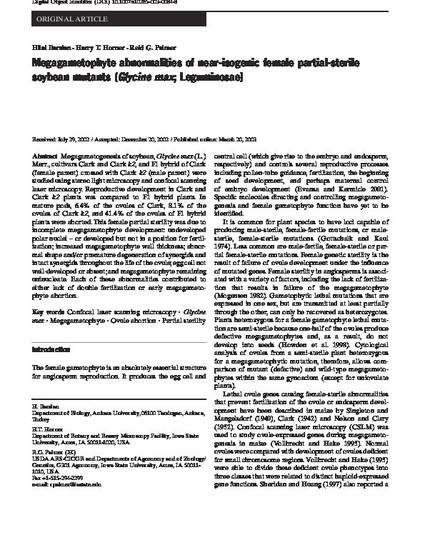
Megagametogenesis of soybean, Glycine max (L.) Merr., cultivars Clark and Clark k2, and F1 hybrid of Clark (female parent) crossed with Clark k2 (male parent) were studied using stereo light microscopy and confocal scanning laser microscopy. Reproductive development in Clark and Clark k2 plants was compared to F1 hybrid plants. In mature pods, 6.4% of the ovules of Clark, 8.1% of the ovules of Clark k2, and 41.4% of the ovules of F1 hybrid plants were aborted. This female partial sterility was due to incomplete megagametophyte development: undeveloped polar nuclei—or developed but not in a position for fertilization; increased megagametophyte wall thickness; abnormal shape and/or premature degeneration of synergids and intact synergids throughout the life of the ovule; egg cell not well-developed or absent; and megagametophyte remaining uninucleate. Each of these abnormalities contributed to either lack of double fertilization or early megagametophyte abortion.
Available at: http://works.bepress.com/harry-horner/105/

This article is published as Ilarslan, Hilal, Harry T. Horner, and Reid G. Palmer. "Megagametophyte abnormalities of near-isogenic female partial-sterile soybean mutants (Glycine max; Leguminosae)." Journal of plant research 116, no. 2 (2003): 141-149. doi: 10.1007/s10265-003-0084-8.